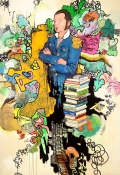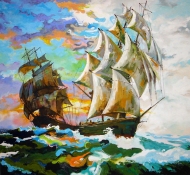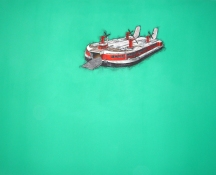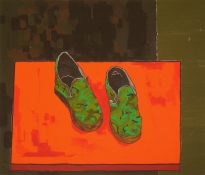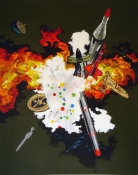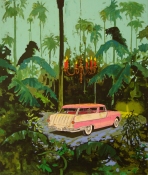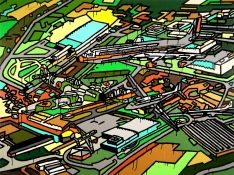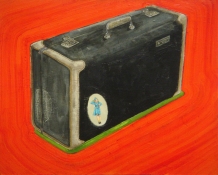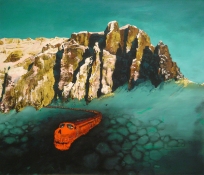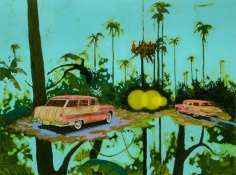By the end of the Renaissance, most of the earth’s land masses had been discovered by European explorers. By the mid-1960’s all of the world’s accessible arable land had been cultivated to capacity and governments turned to fossil fuel based fertilizers in order to increase the land’s productivity. And by the end of the first half of the 21st century, physical and technological limitations will eventually prevent humanity from breaking through any new frontiers. For example, according to Moore’s Law of Integrated Circuits, by the year 2020, the smallest computer microchips will be only 2 atoms thick and can get no smaller. And despite advances in optics, we will be able to see only so far with telescopes because the light emitted by distant stars will not have had the time to reach us, given the finite speed of light.
So what can one explore when all the frontiers have been conquered? How is one to break past this event horizon? And how, in an art as old as painting can one carve out new territory, especially if one accepts the argument that Modernism has exhausted all of painting’s possibilities. Perhaps it doesn’t matter, and perhaps it isn’t possible. This is the focus of this body of work, to traverse and re-traverse familiar territory in hopes of finding something overlooked, or to rediscover something long lost.
So what can one explore when all the frontiers have been conquered? How is one to break past this event horizon? And how, in an art as old as painting can one carve out new territory, especially if one accepts the argument that Modernism has exhausted all of painting’s possibilities. Perhaps it doesn’t matter, and perhaps it isn’t possible. This is the focus of this body of work, to traverse and re-traverse familiar territory in hopes of finding something overlooked, or to rediscover something long lost.
voyages in spacetime
